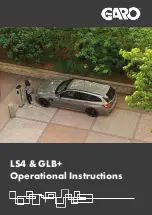
•
One or more TPMS sensors are missing or
damaged. The DIC message and the TPMS
malfunction light should go off when the TPMS
sensors are installed and the sensor matching
process is performed successfully. See your
dealer/retailer for service.
•
Replacement tires or wheels do not match your
vehicle’s original equipment tires or wheels.
Tires and wheels other than those recommended
for your vehicle could prevent the TPMS from
functioning properly. See Buying New Tires on
page 5-64.
•
Operating electronic devices or being near facilities
using radio wave frequencies similar to the TPMS
could cause the TPMS sensors to malfunction.
If the TPMS is not functioning it cannot detect or signal
a low tire condition. See your dealer/retailer for
service if the TPMS malfunction light and DIC message
comes on and stays on.
TPMS Sensor Matching Process
Each TPMS sensor has a unique identification code.
Any time you replace one or more of the TPMS sensors
or rotate your vehicle’s tires, the identification codes
need to be matched to the new tire/wheel position. The
sensors are matched to the tire/wheel positions in
the following order: driver side front tire, passenger side
front tire, passenger side rear tire, and driver side rear
tire using a TPMS diagnostic tool. See your
dealer/retailer for service.
The TPMS sensors can also be matched to each
tire/wheel position by increasing or decreasing the tire’s
air pressure. If increasing the tire’s air pressure, do
not exceed the maximum inflation pressure indicated on
the tire’s sidewall. To let air-pressure out of a tire you
can use the pointed end of the valve cap, a pencil-style
air pressure gage, or a key.
You have one minute to match the first tire/wheel
position, and five minutes overall, to match all four
tire/wheel positions. If it takes longer than one minute,
to match the first tire and wheel, or more than
five minutes to match all four tire and wheel positions,
the matching process stops and you need to start over.
The TPMS sensor matching procedure is outlined
below:
1. Set the parking brake.
2. Turn the ignition switch to ON/RUN with the
engine off.
3. Turn the exterior lamp switch from AUTO to OFF
four times within three seconds. A double horn
chirp will sound and the TPMS low tire warning light
starts flashing. The double horn chirp and flashing
TPMS warning light indicates the TPMS matching
process has started. The TPMS warning light should
5-61
2008 - Isuzu 290/370 Owner Manual
Содержание 2008 i290
Страница 122: ...NOTES 2 42 2008 Isuzu 290 370 Owner Manual...
Страница 125: ...NOTES 3 3 2008 Isuzu 290 370 Owner Manual...
Страница 126: ...Instrument Panel Overview Manual Transmission shown Automatic Transmission similar 3 4 2008 Isuzu 290 370 Owner Manual...
Страница 168: ...Radio s AM FM Radio Radio with CD MP3 3 46 2008 Isuzu 290 370 Owner Manual...
Страница 188: ...NOTES 3 66 2008 Isuzu 290 370 Owner Manual...
Страница 363: ...Engine Drive Belt Routing 2 9L and 3 7L Engines 6 15 2008 Isuzu 290 370 Owner Manual...
















































